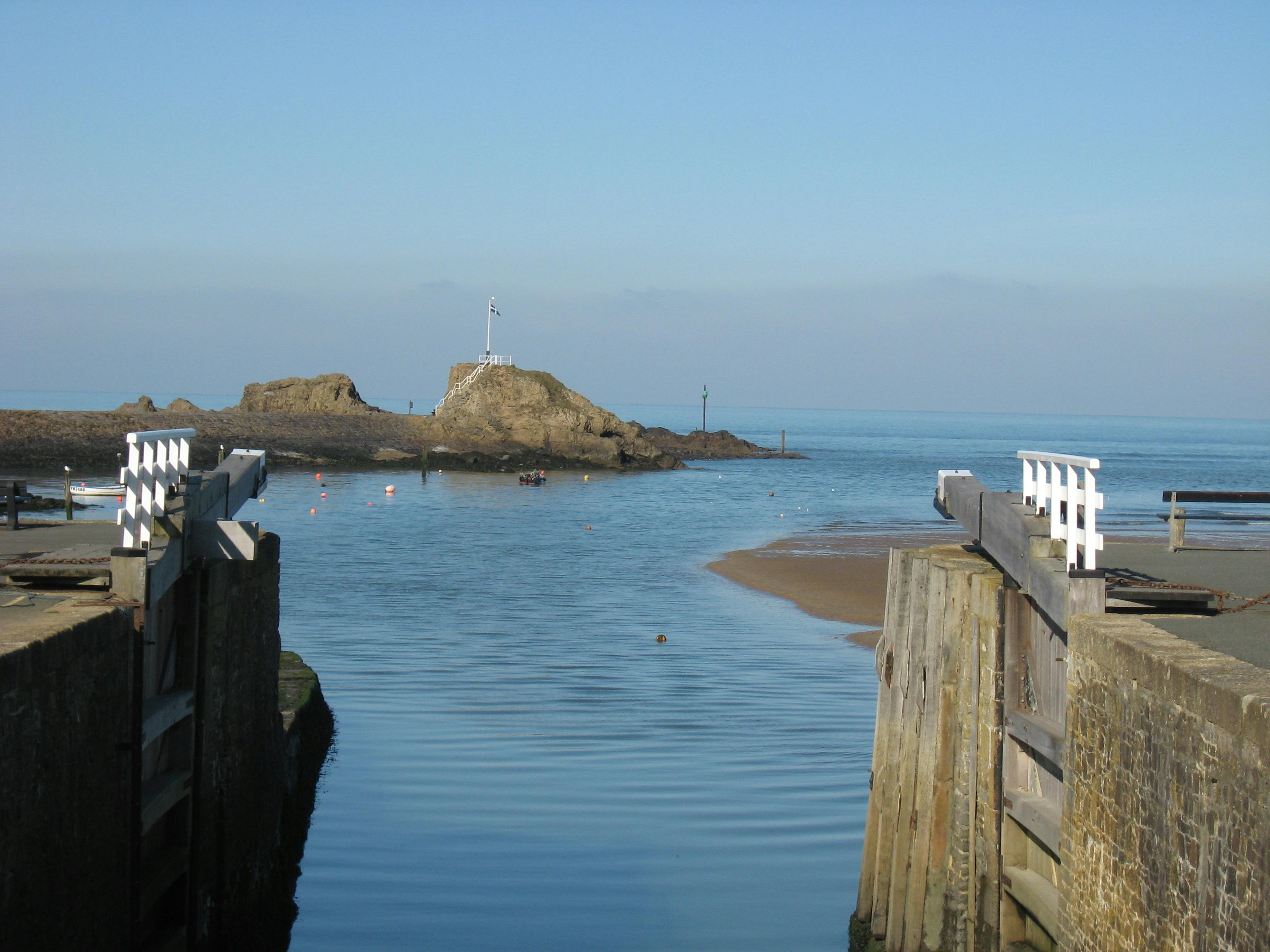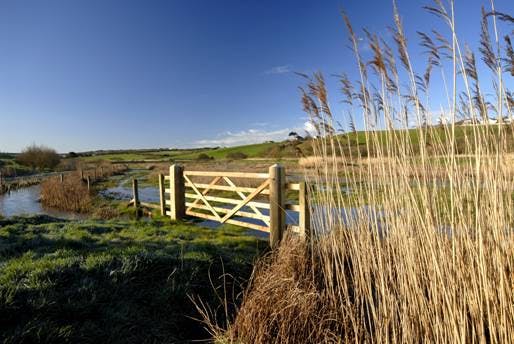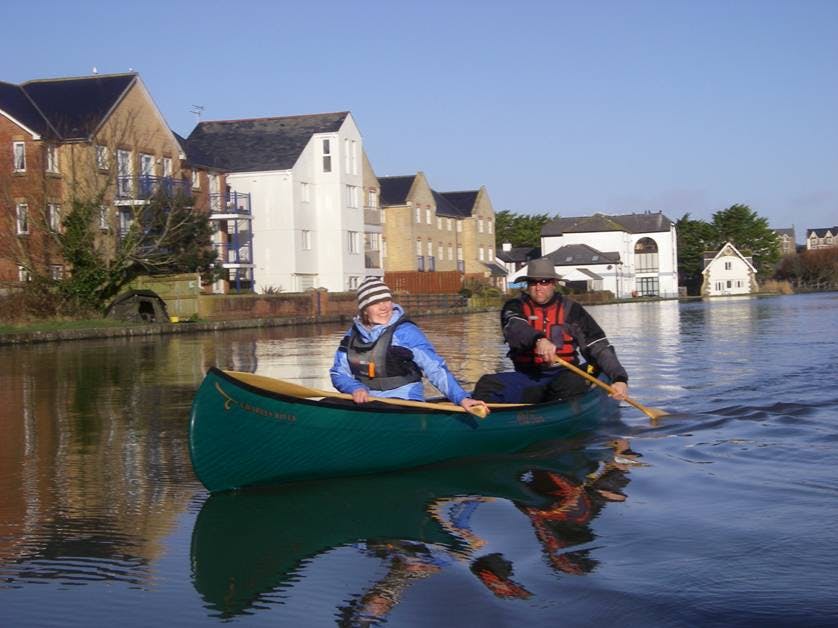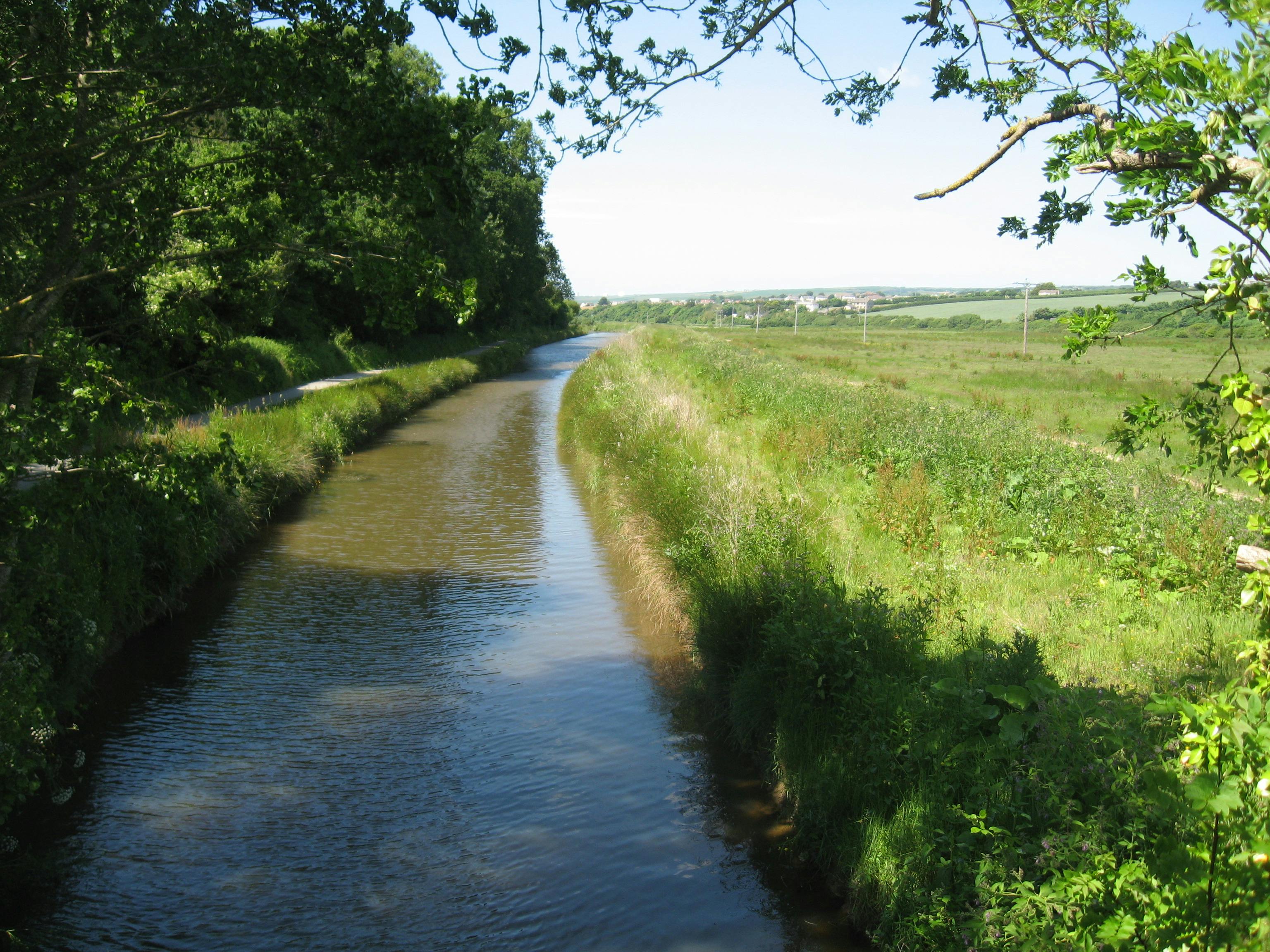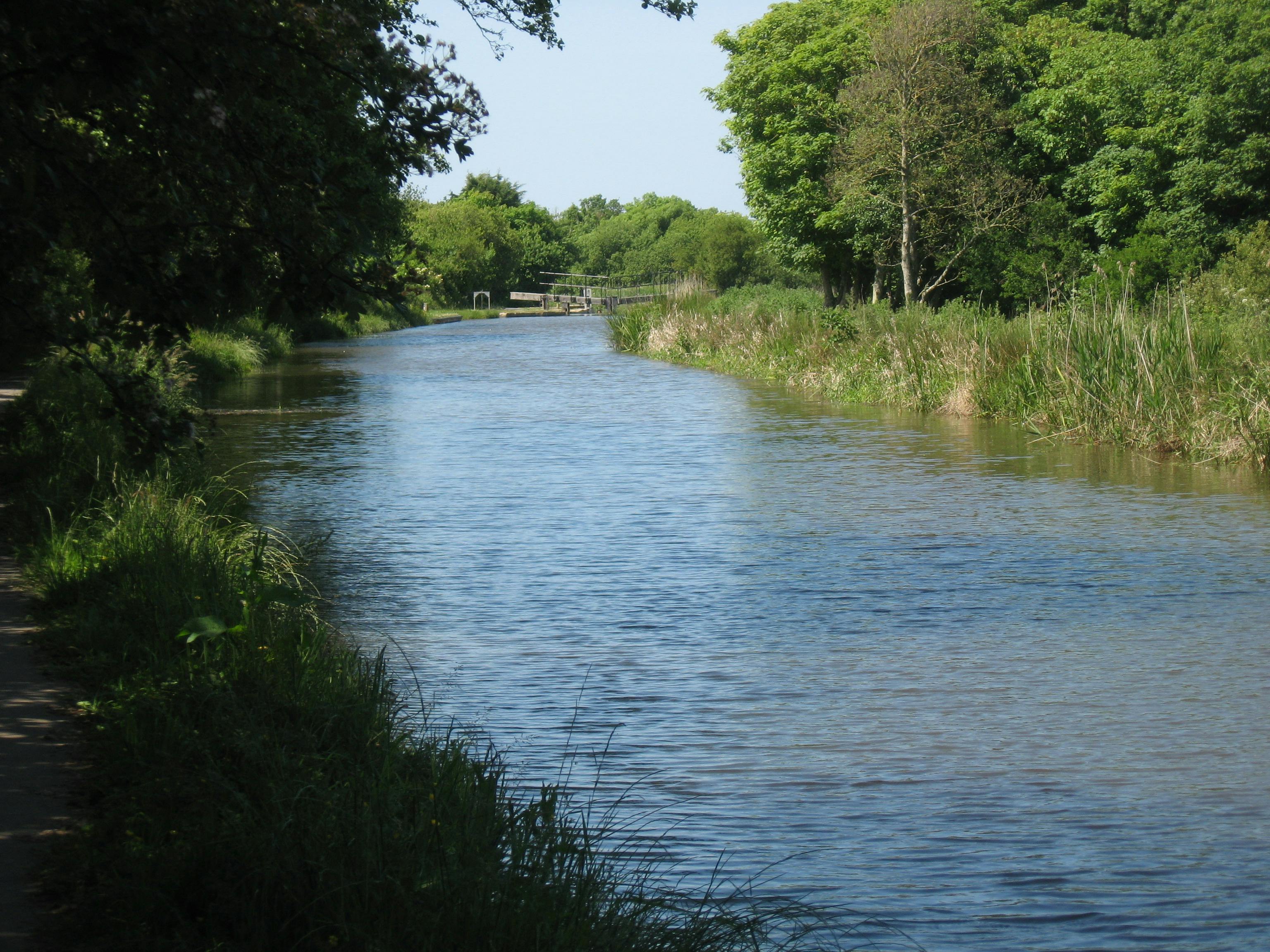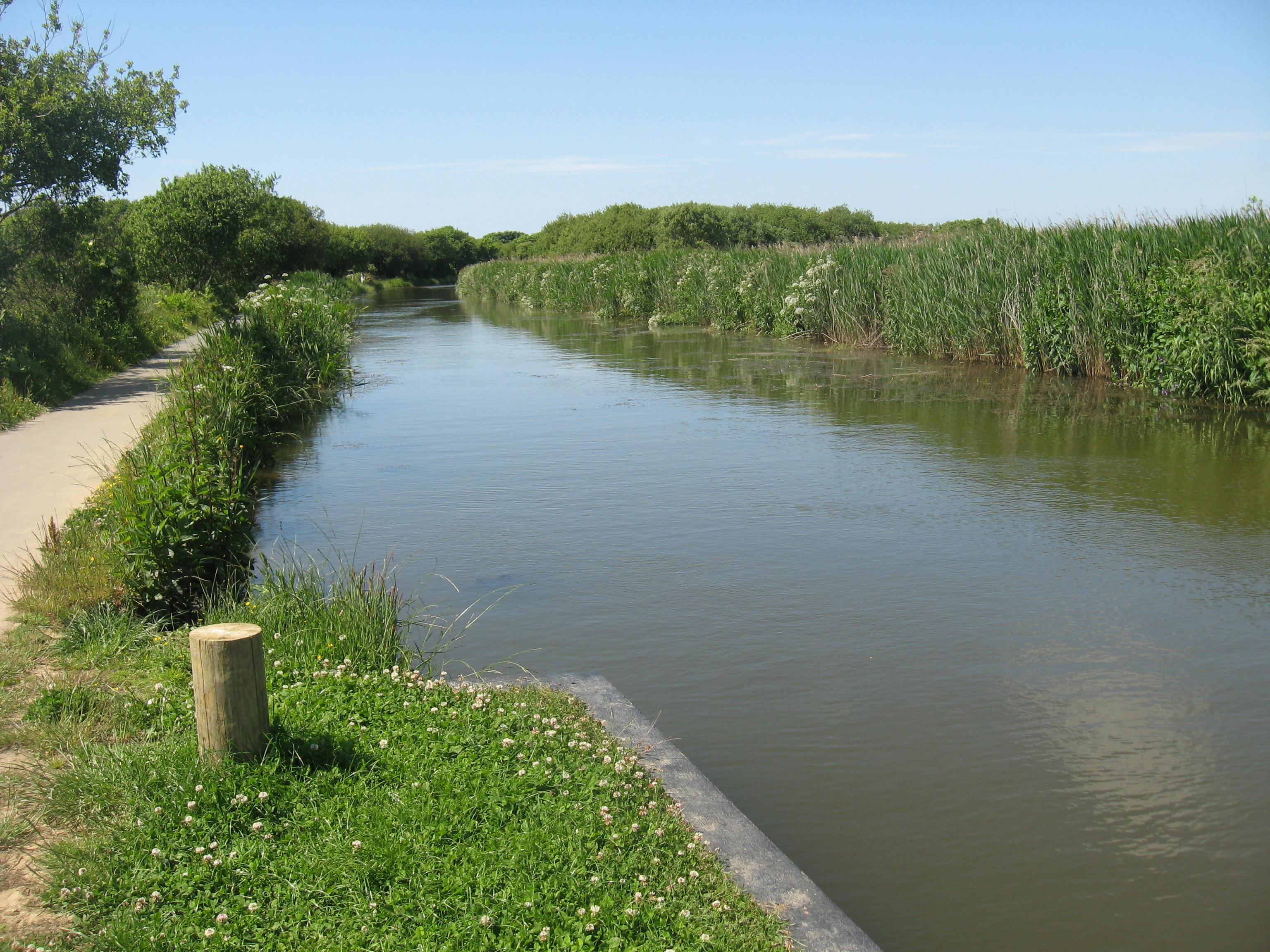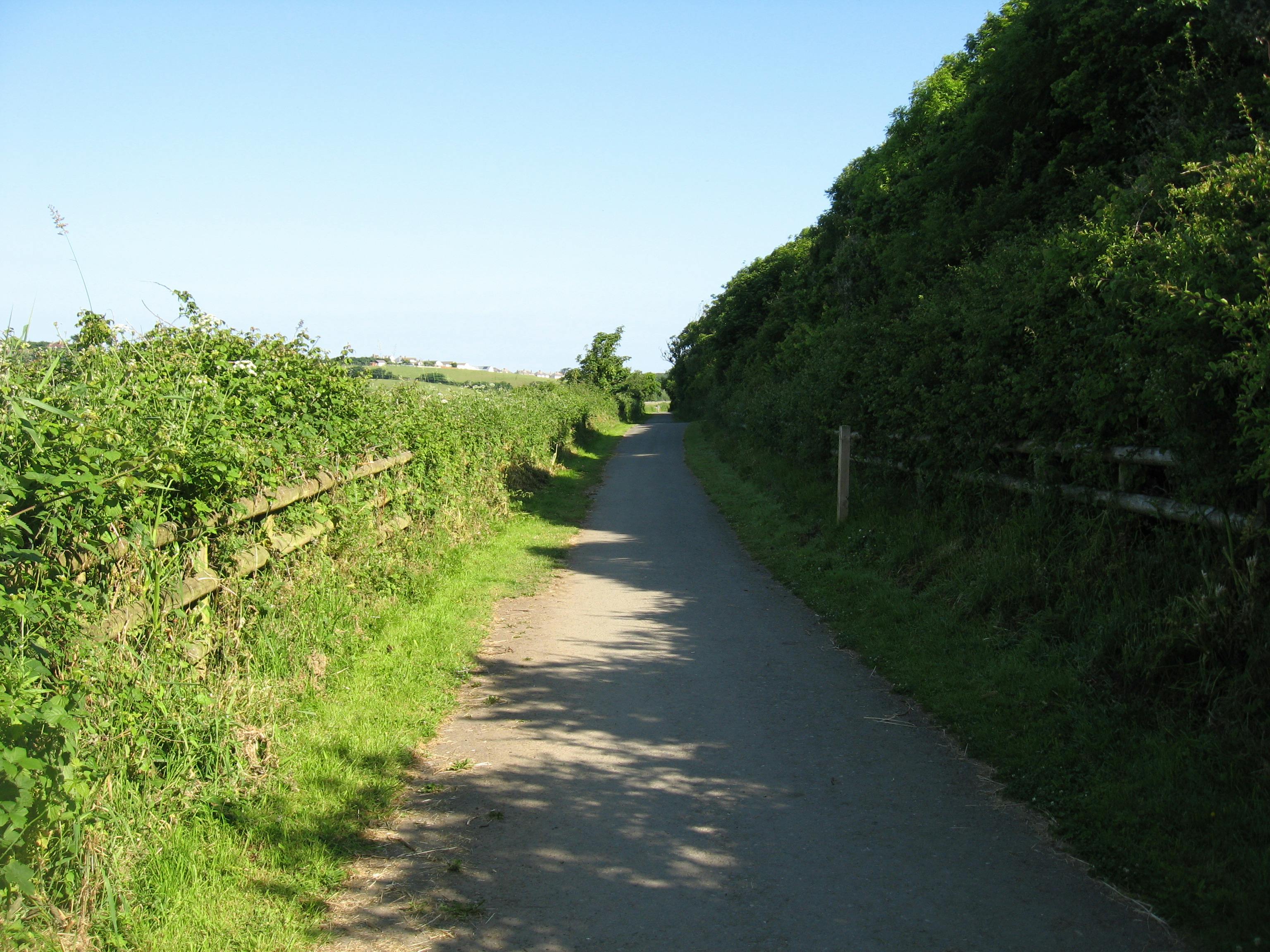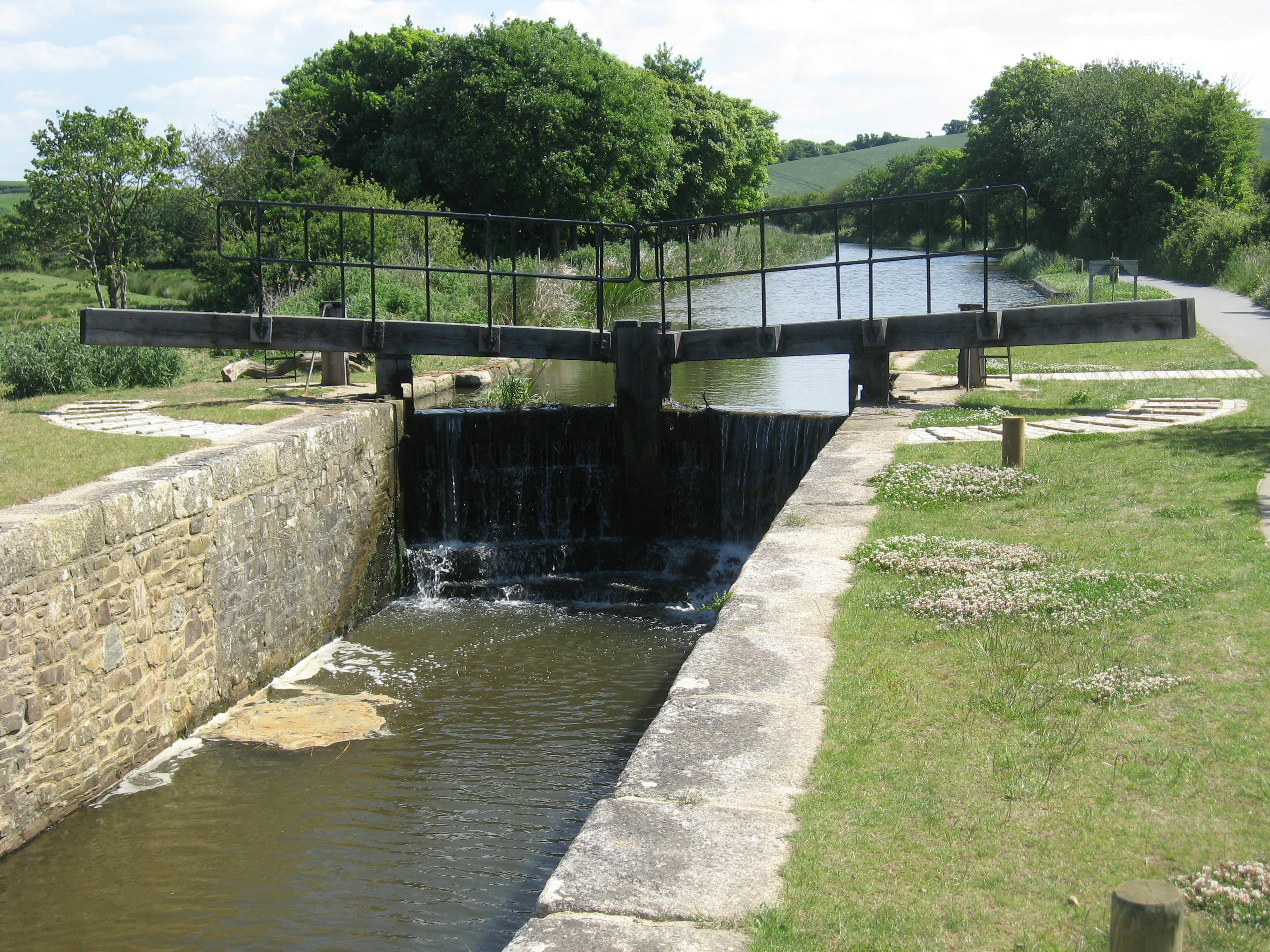Welcome to the Bude Canal and Harbour Engagement Platform
The Bude Canal and Harbour are iconic landmarks, supporting a range of land and water-based activities as well as providing a home for some of our rarest wildlife. They are a fantastic resource for the local community and put Bude on the map as a unique destination. Cornwall Council is proud to manage this special place and is committed to safeguarding it for current and future users.
On this page you can find regular updates providing the latest news and advice about the canal and harbour as well as background information to help you make the most of any visit.
Bude Canal Today
Constructed under an Act of Parliament between 1819 and 1825, the original 35.5 miles of canal was just part of John Edyvean’s (c.1770’s) ambitious 95-mile concept to join with the River Tamar. The canal was unique, in that it was constructed for agricultural purposes, transporting sea-sand to be applied as a soil conditioner and liming agent; a practice that fell away in subsequent decades as chemical fertiliser overtook.
Today only a short section of c. 1.8 miles from the harbour to Whalesbrough remains watered. With the upper canal reaches mostly dry, it no longer receives water from Lower Tamar Lakes, but instead relies on the rivers Strat and Neet, which flow through catchments dominated by improved grassland and arable cropping.
The canal and harbour are one Bude's foremost amenity spaces. A level tow-path provides an accessible route from the town to the surrounding countryside. The harbour and canal support small-scale commercial fishing, a coarse fishery, water-based activities and provide an attractive setting for canal-side food and retail outlets and accommodation.
This page is intended to help keep the community informed about the canal, providing updates and a place to ask questions. It has been developed in partnership between Cornwall Council Countryside and Maritime Teams, and we are pleased to work with a wide range of stakeholders involved in the canal and harbour through the Bude Valley Management Advisory Group:
Please note that the principle source of information for Bude Harbour is found at the following links:
- Bude Harbour News (select Bude filter) – News - Cornwall Harbours
- General information - Bude - Cornwall Harbours
The Bude Canal Dredging Programme referenced on this platform is part-funded] by the UK Government through the UK Shared Prosperity Fund. Cornwall Council has been chosen by Government as a Lead Authority for the fund and is responsible for monitoring the progress of projects funded through the UK Shared Prosperity Fund in Cornwall and the Isles of Scilly.

The Bude Canal and Harbour are iconic landmarks, supporting a range of land and water-based activities as well as providing a home for some of our rarest wildlife. They are a fantastic resource for the local community and put Bude on the map as a unique destination. Cornwall Council is proud to manage this special place and is committed to safeguarding it for current and future users.
On this page you can find regular updates providing the latest news and advice about the canal and harbour as well as background information to help you make the most of any visit.
Bude Canal Today
Constructed under an Act of Parliament between 1819 and 1825, the original 35.5 miles of canal was just part of John Edyvean’s (c.1770’s) ambitious 95-mile concept to join with the River Tamar. The canal was unique, in that it was constructed for agricultural purposes, transporting sea-sand to be applied as a soil conditioner and liming agent; a practice that fell away in subsequent decades as chemical fertiliser overtook.
Today only a short section of c. 1.8 miles from the harbour to Whalesbrough remains watered. With the upper canal reaches mostly dry, it no longer receives water from Lower Tamar Lakes, but instead relies on the rivers Strat and Neet, which flow through catchments dominated by improved grassland and arable cropping.
The canal and harbour are one Bude's foremost amenity spaces. A level tow-path provides an accessible route from the town to the surrounding countryside. The harbour and canal support small-scale commercial fishing, a coarse fishery, water-based activities and provide an attractive setting for canal-side food and retail outlets and accommodation.
This page is intended to help keep the community informed about the canal, providing updates and a place to ask questions. It has been developed in partnership between Cornwall Council Countryside and Maritime Teams, and we are pleased to work with a wide range of stakeholders involved in the canal and harbour through the Bude Valley Management Advisory Group:
Please note that the principle source of information for Bude Harbour is found at the following links:
- Bude Harbour News (select Bude filter) – News - Cornwall Harbours
- General information - Bude - Cornwall Harbours
The Bude Canal Dredging Programme referenced on this platform is part-funded] by the UK Government through the UK Shared Prosperity Fund. Cornwall Council has been chosen by Government as a Lead Authority for the fund and is responsible for monitoring the progress of projects funded through the UK Shared Prosperity Fund in Cornwall and the Isles of Scilly.

-
Bude Canal Dredging Operations
Share Bude Canal Dredging Operations on Facebook Share Bude Canal Dredging Operations on Twitter Share Bude Canal Dredging Operations on Linkedin Email Bude Canal Dredging Operations linkMany of you will have seen that works have commenced around the canal to facilitate the dredging operation.
We are very pleased that this long anticipated task is now underway, with a programme to complete this winter. However, we also want to let you know how this will impact the public areas and what you can do to help keep yourself and everyone safe and out of restricted zones so that the operation can run smoothly.
From 6th November a large section of the Crescent Carpark will be closed off to be used to set up the dewatering zone and to build the pontoon from which the dredger will operate.
This section of the carpark will remain closed throughout, and people seeking nearby parking are redirected to Summerleaze or Crooklets carparks please.
Following set-up, the aim is for the canal to be dredged from the remaining inland section down-stream, with dredging of the harbour taking place last in the sequence. Whilst dredging is underway in the different zones, they will be closed to water activity, for reasons of health and safety - it will not be possible to purchase day launches during the closed periods.
We expect that the Upper Basin (leisure zone) will be dredged from about the end of the first week in December, with the harbour zone following on in the period before Christmas.
Throughout the operations silt curtains and floating booms will be installed to both limit silt migration and designate the extent of closures.
We are expecting the car park to be substantially open again by the end of January 2024.
-
Bude Canal and Harbour - Storm Ciaran Update
Share Bude Canal and Harbour - Storm Ciaran Update on Facebook Share Bude Canal and Harbour - Storm Ciaran Update on Twitter Share Bude Canal and Harbour - Storm Ciaran Update on Linkedin Email Bude Canal and Harbour - Storm Ciaran Update linkFollowing the named storm Ciaran over night and this morning (02.11) we would highlight flooding along the Tow Path and advise continuing to stay away from the canal area util flood waters have receded.
Image showing flood water along the Tow Path - with the canal carrying excess flows as runoff from heavy rainfall over night and this morning moves down the catchment.
We would like to thank all involved making sure that the infrastructure was in place to brace against the expected strong winds, storm surge and heavy rainfall.
The Sea Lock was prepared with chains and bars rigged last week and everything was checked at high tide c. 7.30 this morning.
The canal is currently in spate, with flows carrying high volumes of silt from overland flow across the catchment as saturated, compacted and bare soils have struggled to infiltrate the rain.
1. The Sea Lock and 2. Whalesborough Weir during Storm Ciaran; approx. 7.30 to 8am 02.11.23
-
Canal Dredging and Bank Repairs Update
Share Canal Dredging and Bank Repairs Update on Facebook Share Canal Dredging and Bank Repairs Update on Twitter Share Canal Dredging and Bank Repairs Update on Linkedin Email Canal Dredging and Bank Repairs Update link
Cornwall Council is delighted to let you know about our upcoming plans to dredge Bude Canal, which has been a priority for many stakeholders in recent years. The project will provide many benefits for canal users, as well as improved ecology and flood risk reduction.
Works to repair the canal bank alongside Crescent Carpark, will follow on after the dredging.
Progress has already been made with dredging, and since November 2022 the inland zone east of County Road (Rodds) Bridge has been desilted. This was a relatively simple operation, with no impact on the use of the canal or the paths around it. We are now in the position to move ahead with dredging the lower zones, from County Road (Rodds) Bridge to the sea lock. However, this is a significant and complex operation over a long stretch of the canal; given the challenges and sensitivities of the site and the heavy plant required, it will have a greater impact on canal users and the community.
In order to give the community time to be aware of upcoming impacts, including canal, path and carpark restrictions we are providing information about the intended timeline, set out below, although, please note that the actual timeline for the operation remains dependent on weather and ecological conditions being favourable.
Works planned to start in early November
The anticipated start date is Monday 6th November, when the operation will begin setting up in the Crescent Carpark. The building of the silt dewatering area will entail fencing off approximately two thirds of the Crescent Carpark with perimeter screening for both public and ecological security. .
Customers of the Crescent Carpark will be directed to alternative parking at Summerleaze and Crooklets Carparks.
During the dredging period, activity on the canal will be restricted and day launches will not be available for purchase.
Members of the public are politely reminded to follow the information on site notices and follow the request of works stewards for your own and others safety.
The overall dredging operation is then expected to complete by the end of January 24, however the exact timeline may be impacted by climate and ecological conditions, which are outside of our control.
Following on from the dredging work, repairs will be carried out to a section of the canal bank from Flacon Bridge. These works will require management of access to the footpath for approx.100m section during which time people will be diverted through the Crescent Carpark.
It is expected that the majority of the carpark will be re-opened on completion of the dredging works, however some fenced off areas will remain to allow the contractors to work safely.
The embankment repairs are expected to complete before Easter 24.
For questions on these works, please contact: contracting@cormacltd.co.uk
-
Clear messages for canal users at Bude Heritage Day
Share Clear messages for canal users at Bude Heritage Day on Facebook Share Clear messages for canal users at Bude Heritage Day on Twitter Share Clear messages for canal users at Bude Heritage Day on Linkedin Email Clear messages for canal users at Bude Heritage Day link
Cornwall Council was delighted to team up with Southwest Water to celebrate the canal and harbour's 200th anniversary at Bude Heritage day on 16th July, and highlight important messages to safeguard it long into the future.
Building on the Non-native Species National Secretariat biosecurity campaign 'Check, Clean Dry' the event helped raise awareness about zebra mussels in the canal; a non-native species that can choke water pipes and destroy native mussels. To help keep other watercourses clear of zebra mussel, canal and harbour users in Bude must
- Check your equipment, boat, and clothing after leaving the water for mud, aquatic animals or plant material. Remove anything you find and leave it at the site.
- Clean everything thoroughly as soon as you can, paying attention to areas that are damp or hard to access. Use hot water if possible.
- Dry everything for as long as you can before using elsewhere as some invasive plants and animals can survive for over two weeks in damp conditions.
It was also a great opportunity to let the community know about the progress on major works planned for the canal later this financial year, including embankment repairs and a scheme of dredging, as well as explain how we are seeking to better manage the canal and its special wildlife in light of the challenges posed by climate change and changing patterns in water availability.
If you would like to help protect and conserve the canal through our volunteering events, please contact charlotte.evans@cornwall.gov.uk
Opportunities include:
- Wildlife recording
- Management of Invasive Non-native Species
- Communications and awareness raising
- Helping with lock movements
-
Local Notice to Mariners - 4 of 2023: Resumption of Sea Lock operation
Share Local Notice to Mariners - 4 of 2023: Resumption of Sea Lock operation on Facebook Share Local Notice to Mariners - 4 of 2023: Resumption of Sea Lock operation on Twitter Share Local Notice to Mariners - 4 of 2023: Resumption of Sea Lock operation on Linkedin Email Local Notice to Mariners - 4 of 2023: Resumption of Sea Lock operation link
Mariners are advised that the Sea Lock is now available to navigation, this is as a result of river levels stabilising and we can reliably resume abstraction. A trial swing of the Outer Gates has been made and lock movements can now be booked.
For the full list of Harbour Notices please visit: Document Centre - Cornwall Harbours
-
Harbour Notice - Temporary closure of Sea Lock
Share Harbour Notice - Temporary closure of Sea Lock on Facebook Share Harbour Notice - Temporary closure of Sea Lock on Twitter Share Harbour Notice - Temporary closure of Sea Lock on Linkedin Email Harbour Notice - Temporary closure of Sea Lock link
Mariners are advised that the Sea Lock is temporarily closed to navigation, this is as a result of the long period of time without significant rainfall. Water levels in the River Neet have dropped below a level that we can abstract water from to supply the Canal and replenish after lock movements. For more information and to see the live level data please see - https://riverlevels.uk/river-neet-bude-stratton-helebridge
The situation will be monitored on a regular basis and a further notice issued when river levels rise, and abstraction can re-commence.
Paul Vincent
Harbour Master
26th July 2023
For the official harbour notice, please see: Bude Harbour notice 3 of 2023
For more information: www.cornwallharbours.co.uk
-
Welcome in - Bude's unique Sea Lock
Share Welcome in - Bude's unique Sea Lock on Facebook Share Welcome in - Bude's unique Sea Lock on Twitter Share Welcome in - Bude's unique Sea Lock on Linkedin Email Welcome in - Bude's unique Sea Lock link
On the sunning evening of Friday 16th June, Bude Harbour welcomes four visiting boats, entering through a successful operation of the Sea Lock.
The successful maneuvers were overseen by harbour Master, Paul Vincent and an gathering of spectators. Cornwall Harbors Manager Chris Jones remarked on how good it was to have four boats in together again.
The design of sea lock is as old as the canal, celebrating its 200th birthday this year. The gates and hand winches are Grade II Listed heritage features, but still helping the harbour fulfil its duty to provide portage today. Find out more at the Heritage Listing: Sea lock, lock gates and hand winches, Bude-Stratton - 1328520 | Historic England
The images below show just how smoothly the arrival went. Many thanks to Love Bude for sharing those great photos with us. Thank you to everyone in involved!
Bude is a statutory harbor managed by Cornwall Harbours, for more information, please visit: Home - Cornwall Harbours
All Photos in this post are with credit to Love Bude: Love Bude | Facebook



-
Zebra Mussels - National Invasive Species Week
Share Zebra Mussels - National Invasive Species Week on Facebook Share Zebra Mussels - National Invasive Species Week on Twitter Share Zebra Mussels - National Invasive Species Week on Linkedin Email Zebra Mussels - National Invasive Species Week link
15th to 21st May 2023 is national Invasive species week, which has been established to help highlight information and concerns about the growing threat to our wildlife, environment, infrastructure, health, society and economy from Non-Native Invasive Species.
You may not already know that sections of Bude Harbour and the lower part of the canal are impacted by non-native invasive Zebra mussels.
This is a small population of Zebra mussels at Bude Canal, as it is a sub-optimal habitat for them and they were mostly likely brought to the canal on the hull or in the ballast water of a boat, but we will never know for sure how they arrived. They are a freshwater mussel with dark and light zigzag stripes, up to 5cm long and Bude is the only place that they are known to have impacted in Cornwall. Whilst they are small, they are prolific and differ from our native mussels by attaching to hard surfaces, this habit mean they pose a real threat of smothering our native mussels, blocking pipes and impact on angling and watercraft.
What are we doing about it?
We are working with a range of local people, organisations and experts to manage this species to prevent its spread to our reservoirs protecting our wildlife, our hobbies and our water supply.
In an exciting initiative, South West Water and Cornwall Council are working in partnership to prevent the spread of Zebra mussels from Bude Canal and are hoping to instigate a pilot control plan in 2023.
We hope to eradicate this invasive species from Bude; this also means from Cornwall!
But we need your help to achieve this positive aim, and would like all users of the canal and harbour to be aware of and follow some simple best practice for biosecurity.
Biosecurity is an important tool for us all to prevent the spread of Zebra mussels between waterways.
Please follow the simple three step process to reduce the risk of moving Zebra mussels from Bude canal into any other local water body.

When leaving Bude Canal please:
CHECK your equipment and watercraft to make sure there are no plant or animal stowaways.
CLEAN your equipment leaving any plant or animal stowaways on site where they are already present.
DRY your equipment for at least 48 hours (preferably in sunlight) before entering another waterbody.
Important note! -
Juvenile Zebra mussels can spread through pockets of water i.e. patches on a boat or within angling equipment. These are so small there are invisible to the naked eye, but can survive in these damp areas for over 2 weeks.
So, please ensure you check, clean and dry equipment before visiting any other waterbody.
-
Update on the Sand Tramway - Bude Harbour
Share Update on the Sand Tramway - Bude Harbour on Facebook Share Update on the Sand Tramway - Bude Harbour on Twitter Share Update on the Sand Tramway - Bude Harbour on Linkedin Email Update on the Sand Tramway - Bude Harbour link
To the north of the sea-lock are the remains of the sand tramway tracks, which rise up from the beach, on a ramp, towards the canal. This carried horse pulled trucks from the beach up to the Lower Wharf where the end-tipping trucks would pour the sand into tub-boats. Lengths of the tramway survive, with one section forming an access route to the crossing onto Summerleaze Beach to the north of the harbour.
Unfortunately, this 200-year old feature has experienced erosion that has caused scouring against the embankment wall which is deemed to be causing a trip hazard. Additionally, the scouring has begun to undermine the embankment wall, and some of the blockwork masonry has become loose, falling away from the face of the embankment onto the sand tramway.
Cornwall Council has been investigating a solution and made various proposals in consultation with heritage planning officers. Given the heritage significance of the feature it is important that there is an agreement on the eventual solution, which we intend to be long-term, and easily maintainable.
In lieu of an approved design solution, Cornwall Council has taken the decision to close the sand tramway to public access for health and safety reasons. It is expected that this will be a temporary measure, and that the tramway will be reopened again once the necessary repairs have been made.
The steps from the embankment to the crossing for Summerleaze Beach will remain open as an alternative route. We recognise that the steps do not provide as equal access as the tramway and are working to secure the reopening of the tramway as soon as possible.

Image showing the trip-hazard that has developed at the side of the historic sand tramway, Bude Harbour.
-
Canal Dredging Update - County Road Bridge
Share Canal Dredging Update - County Road Bridge on Facebook Share Canal Dredging Update - County Road Bridge on Twitter Share Canal Dredging Update - County Road Bridge on Linkedin Email Canal Dredging Update - County Road Bridge link
Progress towards the dredging programme continues and this month will see silt excavated in the section up-stream of County Road (Roads) Bridge.
Despite the challenges of the operation, dredging the canal is a priority to:
- Reinstate a safe navigable depth for watercraft
- Restore the role of the canal in carrying flood waters as part of the flood defence strategy for Bude
- To make the canal more resilient to the impacts of climate change, such as the low water levels experienced in the drought of 2022
The section above County Road Bridge will see a further circa 120 meter of canal de-silted, adding to the successful operation completed alongside Whalesborough Ham in late 2022.
This operation will be completed by long-reach excavator, operating from the field and embankment on the right bank, therefore we expect minimal to no impact on the footpath and public access along the canal.
Key Dates
-
12 January 2023
-
21 July 2024
-
16 July 2024
Documents and BVMG Updates
-
 BVMAG Update Summer 2020.pdf (648 KB) (pdf)
BVMAG Update Summer 2020.pdf (648 KB) (pdf)
-
 BVMAG update Winter 2020 -21 Public.pdf (6.1 MB) (pdf)
BVMAG update Winter 2020 -21 Public.pdf (6.1 MB) (pdf)
-
 BVMAG update Summer 2021.pdf (4.49 MB) (pdf)
BVMAG update Summer 2021.pdf (4.49 MB) (pdf)
-
 BVMAG update Winter 2021-22 (002).pdf (4.77 MB) (pdf)
BVMAG update Winter 2021-22 (002).pdf (4.77 MB) (pdf)
-
 Bude Canal Presentation_ SWRFCC 02082022Reduced.pdf (3.71 MB) (pdf)
Bude Canal Presentation_ SWRFCC 02082022Reduced.pdf (3.71 MB) (pdf)
-
 Capital Projects Update_Bude Manaegment Advisory Group - 22082022.pdf (2.67 MB) (pdf)
Capital Projects Update_Bude Manaegment Advisory Group - 22082022.pdf (2.67 MB) (pdf)
-
 Presentation - Public Meeting 12th Jan 2023 (2.66 MB) (pdf)
Presentation - Public Meeting 12th Jan 2023 (2.66 MB) (pdf)
-
 Record of Public Meeting 12th Jan 23.pdf (243 KB) (pdf)
Record of Public Meeting 12th Jan 23.pdf (243 KB) (pdf)
-
 Bude Canal Embankment Visualisation.pdf (8.9 MB) (pdf)
Bude Canal Embankment Visualisation.pdf (8.9 MB) (pdf)
Follow Project
News Categories
- # local nature reserve (1)
- #climate change (1)
- #dredging (1)
- #drought2022 (2)
- #ecology (2)
- #fisheries (1)
- #flood (1)
- #harbour #drought2022 #sealock (1)
- #water-based activities (2)
- #wildlife (1)
- #zebra mussel (2)











